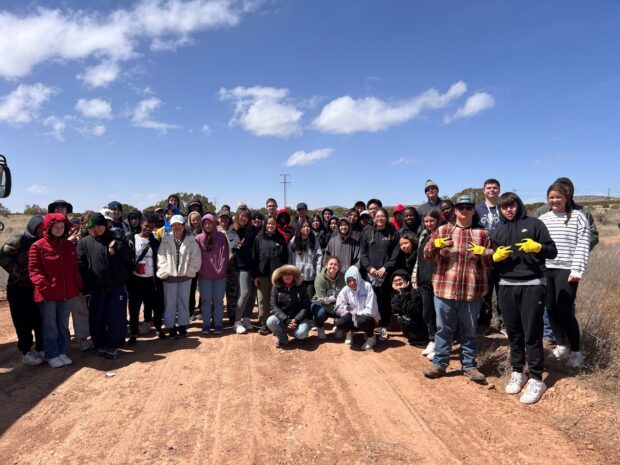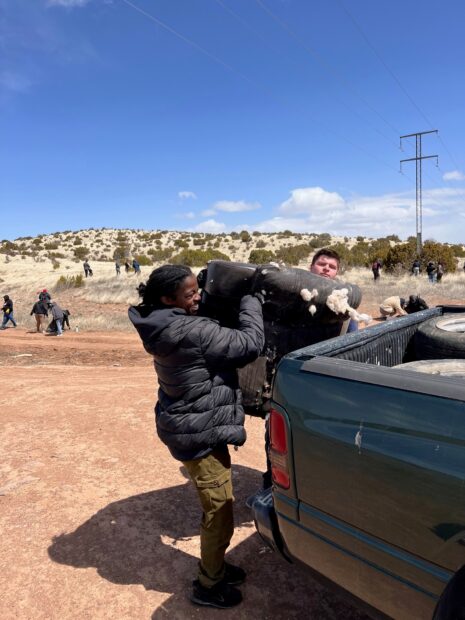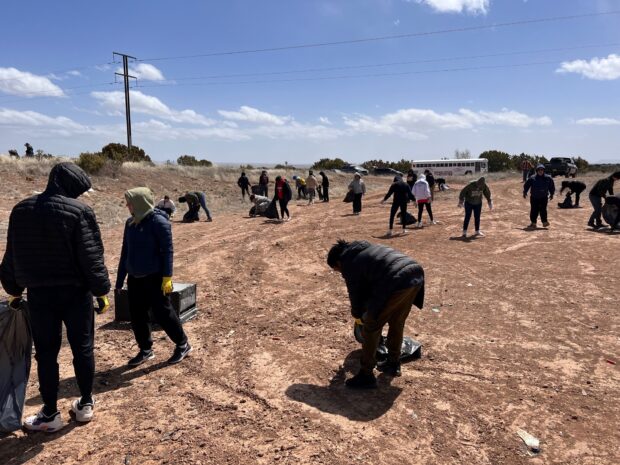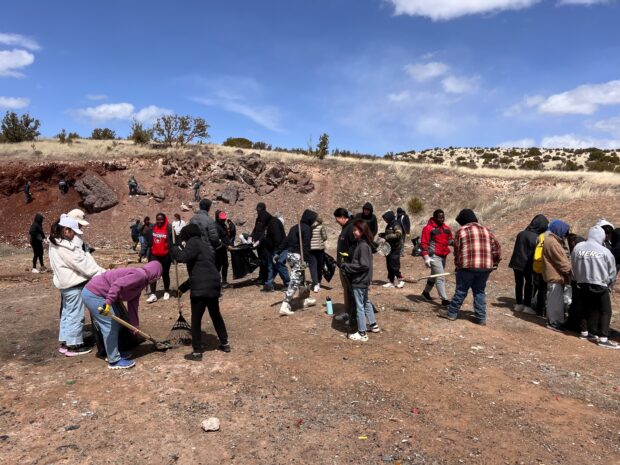We have much more to do and your continued support is needed now more than ever.
Earth Day on the Caja: Caring for Our Common Home

In honor of Earth Day, this week I had the opportunity to take out 70 students and faculty from Menaul High School in Albuquerque, NM, for a guided hike and day of service on the Caja del Rio. The Caja del Rio is one of the most significant cultural, historical, archaeological, spiritual and wildlife landscapes in the American Southwest. Sadly, it’s also considered one the most endangered landscapes in New Mexico as it faces huge threats from climate change, mining, illegal dumping and shooting, poaching, vandalism and theft of ancient petroglyphs and unlawful off-highway vehicle use that disrupts wildlife and cultural sites.
The Caja del Rio is a sacred landscape of great journey. For what originally started as wild game migration trails became Pueblo footpaths. Thousands of years later, one of these footpaths became the famed El Camino Real de Tierra Adentro, the trade route that ran from Mexico City to Ohkay Owingeh. Centuries later, portions of this trade route were designated as New Mexico Highway 1. A few decades later, these portions of NM 1 crossing the Caja became part of Route 66, the “mother road” that called forth westward expansion. For thousands of years, the Caja del Rio has told the complex story of the confluence of cultures and people in New Mexico and the American west. This area has spoken to the sacred connection between people, land, water and wildlife that makes us who we are. The rich fabric of Santa Fe, the nation’s oldest capital, is made up of the complex interwoven cultures of the Caja and our remarkable city wouldn’t be the cultural destination it is today without this historic area. Yet, I found this Earth week, the Caja is not just about outward journeys, but also inward journeys.
The Menaul students began their journey with a hike at the Caja’s La Cieneguilla petroglyph site, one of the most densely populated petroglyph sites in the country with over 4,400 Native American petroglyphs in less than a mile. As we climbed the trail toward the rugged petroglyph cliffs, the trail quickly became impassable, blocked by tumbleweeds so thick you couldn’t even see the petroglyphs that seemingly were entombed by a 10x10ft wall of weeds that had blown off the volcanic plateau into the trail just below. Although this provided us an opportunity to talk about tumbleweeds as an invasive species that had worsened with climate change, I was incredibly disappointed that none of the students would be able to see the Caja’s amazing petroglyphs.
Undeterred and filled with youthful energy, the students began removing the tumbleweeds off the path. Forming a massive assembly line, the students passed each tumbleweed down clearing the path. After 30 minutes of work, the students closest to Caja’s rock walls suddenly looked up to see a giant panel of ancient petroglyphs revealed before their very eyes. With hearts and eyes open in amazement, the students glimpsed for the first time a cultural, historical, and spiritual reality that had been thousands of years in the making. As the petroglyphs told the ancient and complex story of the intersection of the land, water, wildlife and people of New Mexico, the students quickly found themselves fully aware and immersed in a new reality that had always been there, they had just been unable to see it.

As a conservationist and spiritual leader, I often remind people that no problem can be solved by the same level of consciousness that caused it. As I hiked with these students, I was reminded that Earth Day calls to move to a deeper level of consciousness, awareness, and education about the challenges facing the Earth and how we can be more responsible stewards of the Earth. With this in mind, I took the students to an area of the Caja that has been subject to enormous amounts of illegal dumping and shooting. In just a few hours, the students had collected over 2,500 pounds of trash that ranged from old mattresses and couches to used bullet shells. We discussed that through awareness, service and action, Earth Day also gives us the opportunity to see firsthand and become aware of the harmful impacts happening to the land, water, wildlife, as well as the environmental injustices happening within human communities. The students talked about how this clean-up gave them an opportunity to educate their families and the public more about how to be proactive in reusing materials, recycling and composting as well as the need to create local, state, and federal policies and incentives to cut down illegal dumping.
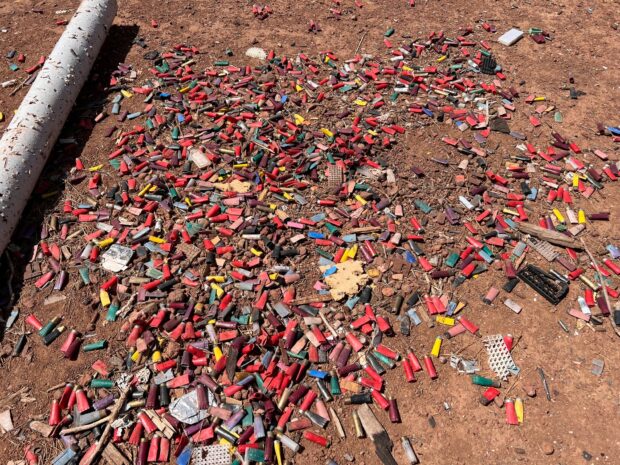
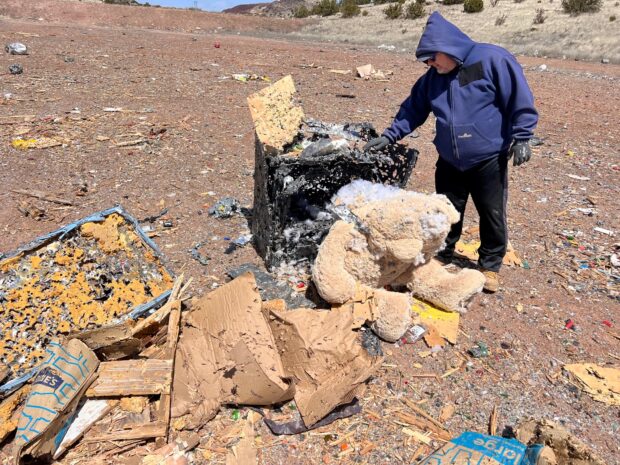
As I listened to the students, I recalled how the very first Earth Day was a hugely successful bipartisan event that led to major policy reforms ranging from the passage of the Clean Air Act to the creation of the Environmental Protection Agency. To this day, Earth Day continues to serve as a clarion call to policy makers to not only improve existing environmental policies, but also pass bold new policies that will protect our land, water and wildlife for future generations. Reflecting on this history, I talked about how the students can support a diverse coalition of Tribal and community leaders calling for permanent protection of the Caja del Rio by Congress and the Administration. We also talked about how important federal legislation like the bipartisan Recovering America’s Wildlife Act and Tribal Wildlife Corridors Act would greatly benefit the Caja’s wildlife habitat, waterways and local communities.
With Menaul students from Europe, Asia and Africa, these students also spoke about the importance of global policies aimed at reducing climate change and the need for the United States to be a world leader on environmental issues. As I listened, I recalled that what I love most about Earth Day is that it promotes unity and diversity. People from all kinds of diverse backgrounds, cultures, countries, spiritualities and religious traditions all come together to care for Mother Earth. On Earth Day, we all find common ground in caring for our common home, the Earth. This year, more than a billion people from 193 countries are expected to celebrate Earth Day, serving as a strong reminder that caring for the Earth still remains a critical way to unite and bring people together.
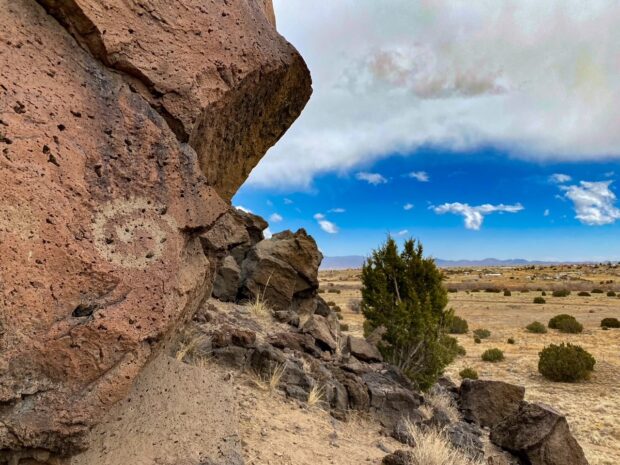
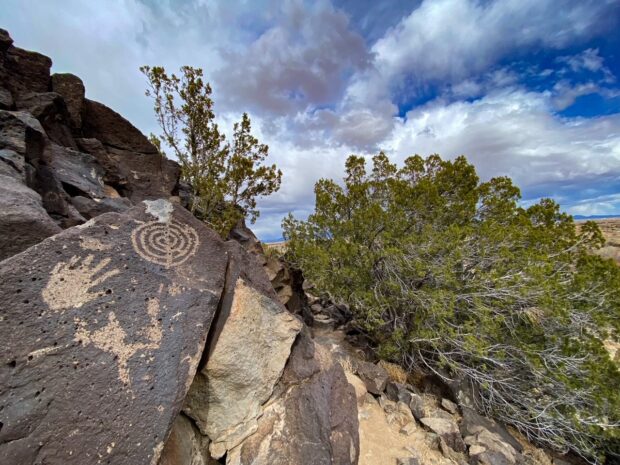
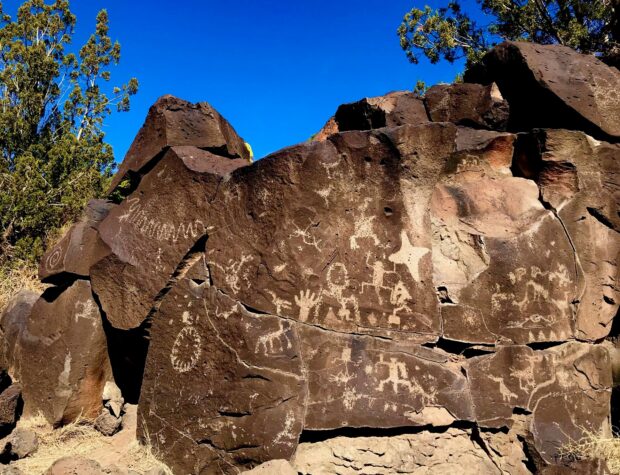
The theme of this year’s Earth Day is “investing in our planet” and encourages people to plant trees, end plastic consumption, and learn more about how they can mitigate climate change. People are also encouraged to persuade businesses and government leaders to invest in conservation and policies so future generations can enjoy clean air, water, and lands. This year’s theme also fundamentally challenges all of us to critically reflect on what role we have as consumers, investors and decision makers and how we can make wise decisions today that will benefit future generations for years to come. As the students concluded their journey of hiking and service on the Caja, they became more aware of their role as stewards of creation and learned that conservation often takes persistence, responsible decision making, and the vision and imagination needed to look beyond what’s just in front of our faces in order to see a world of hope, renewal, restoration and transformation.

